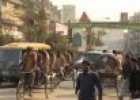Cargando...
Recursos educativos
-
Nivel educativo
-
Competencias
-
Tipología
-
Idioma
-
Tipo de medio
-
Tipo de actividad
-
Destinatarios
-
Tipo de audiencia
-
Creador
-

End-of-unit evaluation - Spain under the Romans
EduBook Organización
- 4943 visitas
During the 1st millennium BC, Celts and Iberians lived on the Iberian Peninsula. These pre-Roman peoples had received Indo-European, Phoenician and Greek influences. At the end of the 3rf century BC,…
-

Introduction - Spain under the Romans
EduBook Organización
- 4875 visitas
During the 1st millennium BC, Celts and Iberians lived on the Iberian Peninsula. These pre-Roman peoples had received Indo-European, Phoenician and Greek influences. At the end of the 3rf century BC,…
-

End-of-unit activities - Spain under the Romans
EduBook Organización
- 4809 visitas
During the 1st millennium BC, Celts and Iberians lived on the Iberian Peninsula. These pre-Roman peoples had received Indo-European, Phoenician and Greek influences. At the end of the 3rf century BC,…
-

End-of-unit evaluation - Plant reproduction
EduBook Organización
- 4773 visitas
Living things can reproduce. They use one or several of their cells to make organisms similar to themselves. There are two types of reproduction in plants and animals: asexual reproduction and…
-

-

End-of-unit activities - Plant reproduction
EduBook Organización
- 4722 visitas
Living things can reproduce. They use one or several of their cells to make organisms similar to themselves. There are two types of reproduction in plants and animals: asexual reproduction and…
-

Check. Spanish society in the 19th century
EduBook Organización
- 4628 visitas
Remember what you have studied in this section and answer the questions: Who made up the ruling classes in the 19th century? What economic activities did they engage in? How had both changed with…
-

Atmospheric pressure and wind
EduBook Organización
- 4639 visitas
4.1. Atmospheric pressure Atmospheric pressure is the weight or force that the air exerts on the surface of the Earth. Atmospheric pressure depends on: Altitude: the higher the altitude, the lower the…
-

End-of-unit activities - Living things
EduBook Organización
- 4359 visitas
There are a great variety of living things on the Earth. Some are microscopic and very simple, like bacteria, and others are very big and complex, like elephants. Even though they are different, all…
-

Dhaka: fastest growing megacity in the world
Maria Pallarés Docente
- 1 lo usan
- 8058 visitas
Video about Dhaka, the capital of Bangladesh. With its current population of 15 million people, Dhaka is the city with the highest population growth in the world. Between 1990 and 2005, the city doubled…
Te estamos redirigiendo a la ficha del libro...













